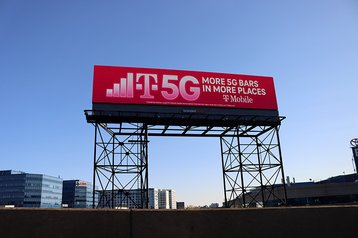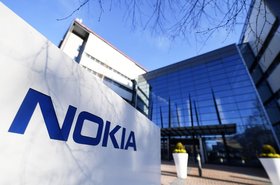"It’s fair to say that 5G Standalone is the real 5G,” CCS Insight director for consumer and connectivity, Kester Mann, said.
When 5G launched commercially in 2019, there were promises of faster download and upload speeds, as low latency and greater capacity were heralded.
A frantic race to launch 5G networks across the world took place between network operators. But those early networks that were launched were 5G Non-Standalone networks.
5G Non-Standalone (5G-NSA) was the first implementation of 5G’s network architecture, and designed to be deployed on top of an existing 4G LTE network.
Now, the industry has begun to transition to 5G Standalone (5G SA).
Not reliant on 4G - it stands alone
Put simply, 5G Standalone is not reliant on older mobile generations and solely uses a 5G core network.
It’s been labeled by many as the “real 5G” and is lauded for what it’s expected to bring to the mobile industry.
Operators big up its potential capabilities, which include things such as network slicing, ultra-low latency, and a simplified RAN and device architecture.
Network slicing in particular is spoken about at length by mobile operators when discussing 5G SA. Slicing allows telecom operators to create separate and isolated networks for different use cases, while the slice can be configured differently.
It’s for this reason that telcos and industry analysts call 5G Standalone the “real” iteration of 5G technology.
“The Non-Standalone version had the anchor of 4G and was an improvement in terms of the capabilities of what could previously be offered,” Mann said. “But the real services and applications over 5G - thinking kind of things such as private mobile networks, and network slicing, and enterprise solutions - were part of the main vision of 5G at the beginning.”
He says it’s a “significant milestone” for the evolution of 5G.
Network slicing
Although network slicing can be achieved on older standards such as 4G, it’s widely seen as being pivotal to 5G Standalone, and getting the most out of the network.
In the UK, Vodafone used network slicing during the King’s Coronation earlier this year, in partnership with TV company ITN.
The operator dedicated an exclusive slice of Vodafone’s public 5G SA network to enable the 'swift and secure' transfer of the live Coronation broadcast coverage from Westminster to ITN’s HQ newsroom in Gray’s Inn Road, London.
Over in the US, telco giant T-Mobile used network slicing for remote video production on a commercial network, as part of what it claimed to be a country-first, during Red Bull’s Cliff Diving event in June.
The customized slice provided the broadcast team with faster data rates in wireless uplink speeds, meaning they could rapidly transfer high-resolution content from cameras and a video drone to the Red Bull production team in near real-time over 5G.
“With an increase in demand straining limited spectrum resources, network slicing allows us to ensure that critical communication needs are met without having to build excessive capacity scaled to meet extreme loads,” T-Mobile US CTO John Saw said at the time.
The 5G Standalone battle Stateside
T-Mobile was the first mobile operator to launch a 5G Standalone commercial network, doing so back in August 2020.
“5G SA is already playing a role in T-Mobile’s 5G strategy,” a T-Mobile spokesperson told DCD. “This has enabled the company to innovate on a whole new level by enabling technologies like network slicing which requires a 5G SA network.
“On top of being a key driver in innovation, T-Mobile’s 5G SA network enables the company to offer its wireless uses the most advanced, fastest, and largest 5G network. 5G SA will continue to play a critical role in T-Mobile’s 5G strategy on both the creation of new technologies and offering customers the best possible experience on our network.”
Rival AT&T is also intent on showcasing 5G SA’s potential, launching its own commercial network at the end of last year.
“5G Standalone is the future of our network and is where we're putting all of our energy around our innovation currently,” Sherry McCaughan, vice president of mobility core and network services AT&T, told DCD.
“At AT&T we have been very thoughtful on how we've deployed 5G Standalone in making sure that across what we call the six-way match, which is from the device to the RAN, to the core, to the transport to the data center, Edge devices, that all of that needs to be in place to have the best experience for the customer.”
McCaughan touted the benefits of the technology, noting faster upload speeds, ultra-low latency, and a more reliable network service.
AT&T is a member of the Open RAN Alliance, which seeks to promote a more flexible, open Radio Access Network (RAN).
A global push
French operator Orange has been busy in this space, launching the service in Spain earlier this year.
Bernard Despres, Orange's vice president of core network, automation, security, and E2E services explained to DCD that it will play a key role in its future 5G build-out.
“It’s clearly in the heart of Orange’s 5G strategy,” he said. “I would say it's a natural prolongation of the launch of our 5G NSA, and now that network is really mature and working well.”
Back in the UK, Vodafone again was the first to launch a Standalone 5G commercial network in the country, doing so in June.
The telco switched the service on in London, Manchester, Glasgow, and Cardiff, and has plans to expand to further locations.
Vodafone’s appetite for 5G SA is shared by the UK government which in April set a target to deliver 5G SA to all populated areas of the country by the end of the decade.
"Our wireless infrastructure strategy sets out our plan to ensure everyone, no matter where they live, can reap the benefits of improved connectivity. We are doing this by ensuring all populated areas in the UK will be served by what I call ‘5G-plus’ technology by 2030," said Michelle Donelan MP, Secretary of State for Science, Innovation, and Technology.
According to the government, 5G SA will “unlock new technologies that will change our lives and the way businesses operate,” boasting a range of opportunities including driverless vehicles, robots, and drones, all of which will require technologies such as network slicing to provide dedicated private networks.
Meanwhile, in South Korea, vendor Samsung paired with Korea Telecom (KT) to launch the country’s first 5G SA network in 2021.
Driving the business use case
When 5G was first launched, it promoted faster download speeds and promised to be a game changer. Arguably though, it was more for the consumer. Now, with its Standalone core, it is seen as ideal for business.
“For me, it’s a very clear driver in the B2B market where there are many differentiators, with the main one being network slicing to offer ready customized service area connectivity for enterprise so you can offer a full private solution like it was in 4G, where it is totally isolated from the rest of the network,” Orange’s Despres said.
“But thanks to a new feature such as local breakout, you can place a part of the core network in the client premises, which provides low latency that can be managed locally. So for example, when people from the company go outside they can get connection from the main public network 5G network.”
Challenges of going solo
As with all technologies, there are challenges. Despres pointed out that the transition from legacy technologies to 4G and 5G itself requires a level of upskilling for Orange’s engineers, and 5G SA has been no different.
Meanwhile, McCaughan acknowledged that AT&T wishes the implementation of a 5G Standalone network could have been quicker in general.
“We wish it was a bit faster, but I don’t think we’re surprised at how it’s been. That said, we believe it's actually one of the fastest technologies we've seen in terms of the evolution of the network,” she said.
“If you start to think about the evolution of the network, we were not talking about Open API-based digital platforms in front of a network much just a few short years ago.”
McCaughan added that the pace of innovation has been really quick and that it does take time to get the right infrastructure in place to keep up with the advancements in technology.
Delivering on its hype
Not everyone agrees that 5G has been a success. South Korean telco SK Telecom said in August that the technology has so far “underdelivered,” and has been “overhyped.”
That’s where 5G Standalone hopes to prove the doubters wrong.
We’ll hear more mobile operators announce their respective launches of 5G Standalone, likely dubbed 5G Ultra, Advanced 5G, or 5G Plus, or “true 5G,” as Vodafone UK chief network officer Andrea Dona calls it.
That said, everyone DCD spoke to seems to agree on the same thing, and that is that 5G Standalone is the “real 5G.”
Time will tell if the use cases that are touted can be underpinned by the technology on a wider scale to make a material difference to the telecommunications industry.








